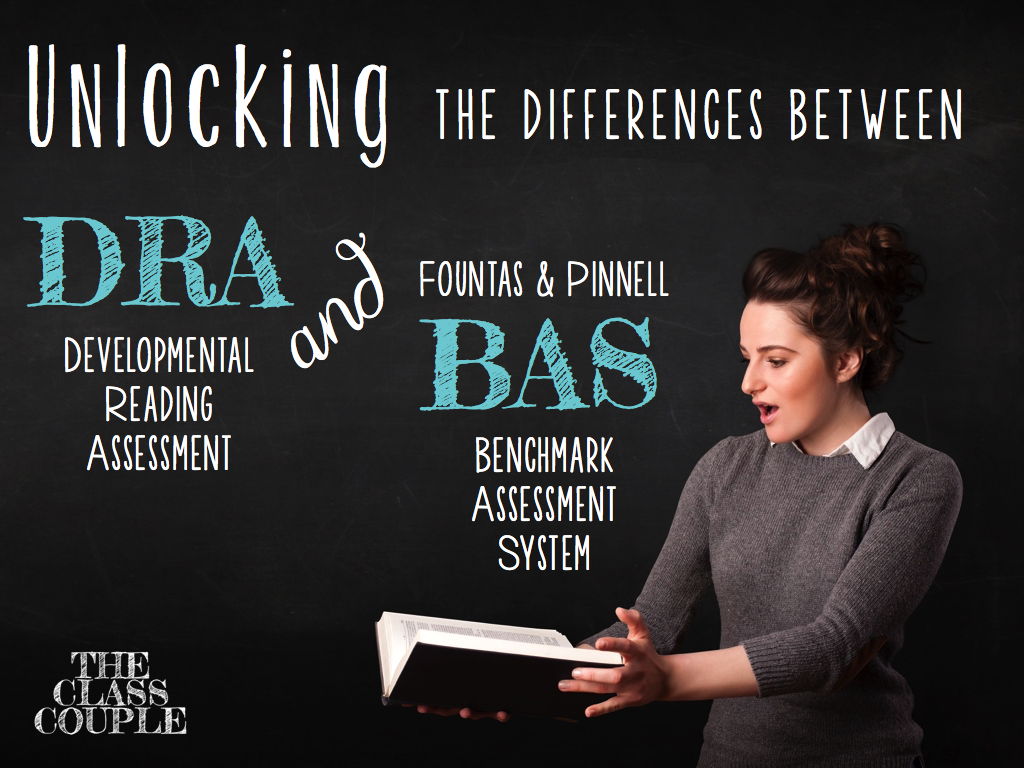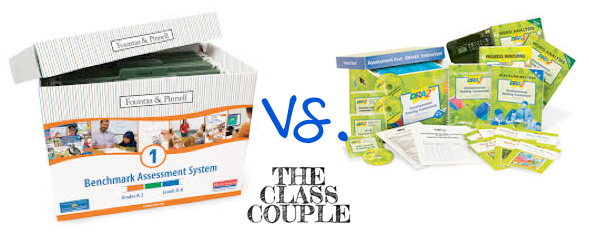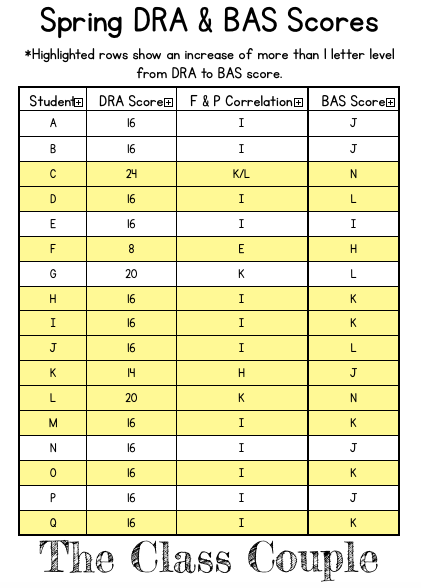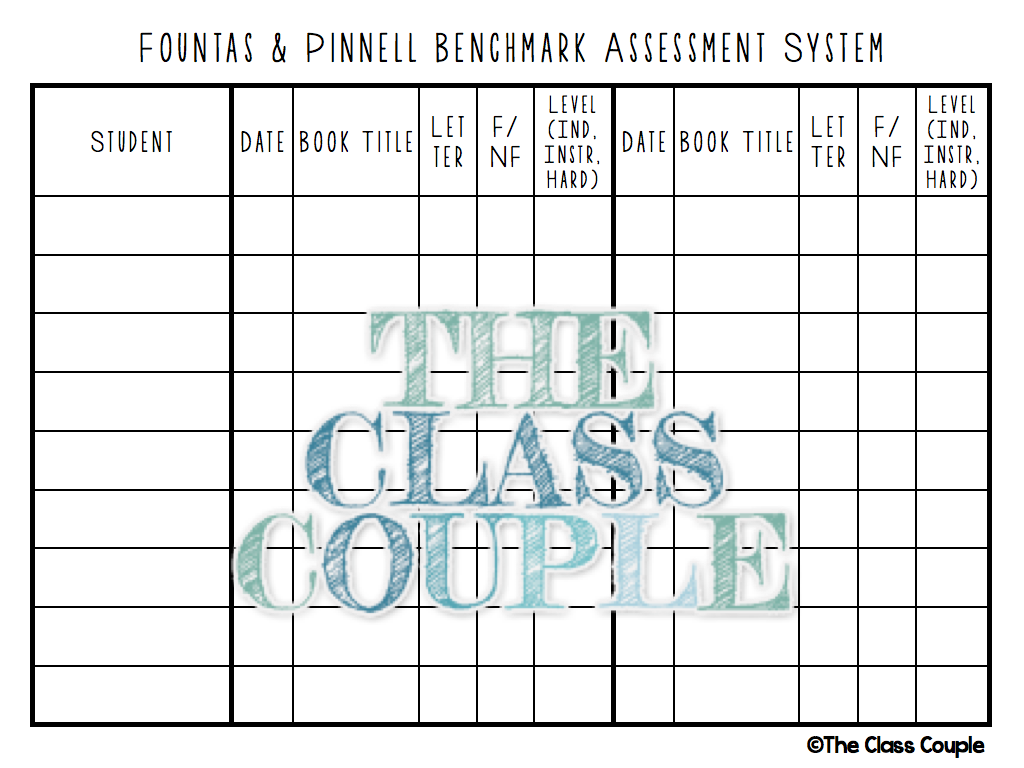Luckily I work in a district that does listen to our feedback and, after many years of this same discussion, we were finally given the opportunity to pilot the Fountas & Pinnell Benchmark Assessment System (We call it the BAS...F&P sounded a little too vulgar if said too quickly!). I was lucky enough to be asked to pilot two years ago, and eagerly accepted the task. I took it seriously because I knew that my feedback would be used as part of a major assessment decision for our district. When I piloted, I was told that I had to give the DRA and the BAS during each assessment window. I wasn't happy about the amount of testing I would have to do, but looking back on it, I'm glad that we did it this way because we were able to compare my students' BAS and DRA scores to see if the reading levels matched when they took both assessments.
This was the biggest and best change from the DRA! Hip Hip Hooray! Finally something that reflects the strategies we teach! (You may not tell them while testing to look in the book, but since we practice this in guided reading, they will do it on their own.) That was always the most stressful part of the DRA because my kids could never remember ALL of the details required to get the advanced score to move on and could never look back for assistance.
In addition, the BAS encourages more of a text discussion, where it is OK to prompt and ask questions. I always hated that I had to mark my students lower on the score sheet because I had to prompt them for more details. All too often, my students would read a story beautifully, but would get stuck at that level because I had to prompt them during the retelling section of the test.
Fluency: The BAS does have you time them once you reach your higher reading levels, but it does not stop them from passing a level. I use it more of a documentation of their reading rate. I personally do not believe that a certain number of words per minute should be mandated for our students. Not everyone reads at the same rate, and some students like to take their time to really inspect the photos and read the captions before reading the text. Some students are just slower readers, but they are also great at comprehending the text. My goal for my students' fluency is for it to sound fluid, as if they were speaking, but I do not place much emphasis on their words per minute. (Yes, I'm ready for the daggers to be thrown!) I don't need to stress their little minds any more than they already are!
Student Interest: They say you can't judge a book by it's cover, but let's face it...when you're 6, you do! The BAS has two books for each level, one fiction and one non-fiction, and I have to tell you that my kids responded to these texts much more than the DRA. Let's face it, they look more like the books they are reading during guided reading, and their interest level is much higher! My boys, who are usually my toughest customers, were much more interested in the BAS books. There is one level in the BAS where the non-fiction book is all about trucks. My boys are ALL OVER that one! Another thing I like about the BAS books is that the pictures and text provide more opportunities for the students to use their context clues to solve/decode the words.
Scores: The year I piloted BAS and gave the DRA, we did a score comparison. On the chart, I highlighted the students who scored higher on the BAS than on the DRA by more than one reading level.
The Time Factor: This is one drawback of the BAS, but it wasn't because of anything negative...my kids just kept passing the levels! I feel this is largely due to the differences in the comprehension sections of the tests. With the DRA, it is difficult to move on to the next level, especially with the higher levels because there is more to regurgitate/ remember/retell. Luckily my district does give us a full day substitute to administer the BAS, and although we do not get them all completed on that day, it does put a dent in our list!
My opinion in Year 3 of BAS: I am now in my third year of administering the BAS to my students, and I continue to be happy with the process and results yielded. One thing I noticed this year that gave me a smile is that my students never experienced the DRA in kindergarten and have never wavered when looking back in the text for assistance when retelling. One may see this as a small victory, but to me, it is a lifetime victory. They have internalized this skill without worry or question.
If you are still reading this post, thanks for sticking with me! If you are interested in the BAS, continue to talk the ear off of your administrator, reading specialists and fellow teachers! You could begin by suggesting to have a few willing faculty members pilot the assessment for a year before making any final decisions.
I do not claim to know everything about the BAS or the DRA, but I can tell you that the confidence in my kiddos when assessing has skyrocketed, and in the end I want them to view reading in a positive and exciting light.























